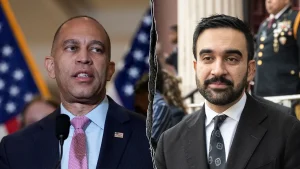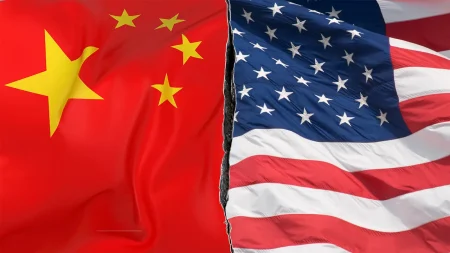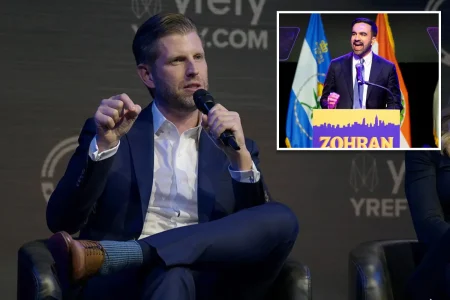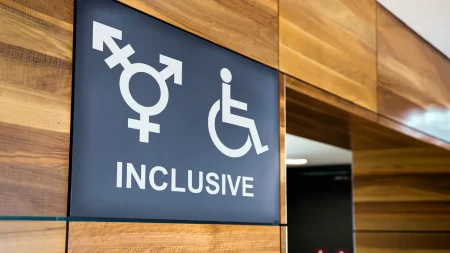The Global Spotlight: Why the World Watches New York’s Mayoral Race
In an era where local politics often remain confined to community conversations, the New York City mayoral race stands as a striking exception. The international spotlight trained on the contest for America’s largest city’s leadership position has intensified with each election cycle, drawing attention from global media outlets, foreign investors, and political observers worldwide. This phenomenon raises a compelling question: Why does the selection of one city’s mayor command such extraordinary global interest? The answer lies in New York’s unique position as a global nexus of finance, culture, diplomacy, and innovation—a city whose leadership decisions reverberate far beyond its five boroughs.
The Financial Capital That Shapes Global Markets
New York City’s identity as the world’s financial epicenter means its governance has direct implications for global markets and economic systems. Wall Street’s reactions to mayoral policies on taxation, regulation, and business development can trigger ripple effects across international exchanges from London to Tokyo. The next mayor will inherit a $100 billion annual budget—larger than most countries—and oversee recovery from the pandemic-induced economic crisis that has reshaped urban economies worldwide. Foreign investors with billions in New York real estate and business interests track the race meticulously, understanding that a new administration’s approach to commercial rent regulations, property taxes, or tourism initiatives could significantly impact their portfolios. Additionally, the city hosts the headquarters of nearly 70 Fortune 500 companies and the United Nations, creating an environment where local governance decisions intersect directly with global commerce. This financial interconnection transforms what might otherwise be considered local political theater into a carefully watched economic indicator for markets worldwide.
The Cultural Lighthouse: Policies That Define Global Trends
New York’s outsized cultural influence means its governance approaches frequently become models adopted by other major global cities. When New York implements innovative policies addressing urban challenges like affordable housing, public transportation, climate resilience, or public safety, urban planners from Singapore to Stockholm take notice. The city serves as a laboratory for urban innovation, with successful programs often replicated internationally—from its pioneering transformation of Broadway into pedestrian plazas to its ambitious sustainability initiatives. The international arts community watches mayoral attitudes toward cultural funding with particular interest, as the city’s theaters, museums, galleries, and creative industries represent a significant economic engine and attract millions of international visitors annually. Moreover, New York’s distinctive approach to embracing diversity while fostering neighborhood identity has created a governance model that resonates globally as cities worldwide grapple with similar challenges of integration and community preservation in an increasingly mobile world. The city’s education policies, particularly regarding its public school system serving over one million students from diverse backgrounds, frequently inform approaches to urban education in metropolises around the world.
The Media Magnifying Glass: How New York Narratives Become Global Stories
The concentration of international media organizations in New York creates a natural amplification effect for its political narratives. With headquarters for major news outlets from virtually every continent, the city’s politics receive disproportionate coverage compared to other American municipalities. This media ecosystem means the personalities, conflicts, and policy debates of the mayoral race reach audiences from Paris to Pretoria with an immediacy and detail rarely afforded to local elections elsewhere. The city’s mayoral campaigns often feature colorful personalities and dramatic narratives that make for compelling international news coverage, transforming local political figures into globally recognized names. This phenomenon has intensified in the digital age, with social media platforms enabling instantaneous global dissemination of New York political developments. International audiences have grown accustomed to following the city’s leadership transitions with the same attention typically reserved for national elections, partly because these media organizations naturally cover the political environment in which they operate. The result is a heightened global awareness of New York’s governance challenges and solutions, creating an informed international audience that watches each mayoral transition with sophisticated understanding of its potential implications.
The Diplomatic Dimension: Governing a Global Crossroads
New York’s unique status as home to the United Nations headquarters places its mayor in an unusual diplomatic position rarely encountered by other municipal leaders. The city hosts 193 permanent missions to the UN and 115 consulates, creating a diplomatic ecosystem that necessitates sophisticated international engagement from its leadership. Each mayor must navigate complex relationships with international representatives while balancing local concerns—from diplomatic parking privileges to security protocols during high-profile global summits. This diplomatic dimension became particularly evident during the pandemic, when New York’s COVID-19 response was scrutinized worldwide, both as a cautionary tale during its initial surge and later as a model for urban recovery. Foreign governments closely analyze how candidates propose addressing security concerns for their diplomatic personnel and facilities, making international security cooperation an unusual priority in local elections. The city’s position as a frequent target for terrorist threats further elevates international interest in its security policies and leadership. Additionally, New York mayors often develop independent diplomatic initiatives that sometimes diverge from federal positions, creating what amounts to a parallel channel of international engagement that foreign governments monitor as carefully as they do national positions.
The Immigration Intersection: Leadership of a Global Human Mosaic
Perhaps most significantly, New York’s identity as an immigrant metropolis means its governance approaches to integration and opportunity resonate deeply with international audiences. With residents from virtually every nation on earth and over 200 languages spoken across its neighborhoods, the city represents a unique experiment in multicultural governance. International communities watch closely as mayoral candidates articulate visions for supporting immigrant populations, promoting economic mobility, and addressing discrimination. Policies regarding municipal ID cards, language access, citizenship preparation, and protection of undocumented residents have established precedents later adopted by cities worldwide. Each mayoral transition prompts analysis from international observers regarding how leadership changes might affect the city’s welcoming stance toward newcomers or its commitment to remaining a global crossroads. This dimension carries particular weight during periods of heightened international migration debates, with New York’s approaches often contrasting with national policies and providing alternative governance models. The mayoral race thus becomes a closely watched indicator of broader American attitudes toward diversity and inclusion at a municipal level, offering insights into how one of the world’s most cosmopolitan cities navigates the complex terrain of identity politics in an age of nationalism.
The Economic Laboratory: Testing Policies with Global Implications
The sheer scale of New York’s economy—with a GDP exceeding $1.5 trillion—transforms its governance experiments into case studies with global relevance. When the city implements new approaches to minimum wage policies, worker protections, or gig economy regulations, the outcomes influence similar debates in metropolitan areas worldwide. International business leaders track how mayoral administrations balance progressive policy goals with maintaining the city’s competitive advantage in attracting corporate investment and talent. The next mayor will guide policies affecting everything from artificial intelligence research centers to climate adaptation infrastructure, creating templates that may define urban futures globally. New York’s approach to post-pandemic recovery has particularly significant international implications, as cities worldwide face similar challenges of reimagining commercial districts, addressing housing affordability crises exacerbated by the pandemic, and rebuilding tourism economies. The city’s solutions to these challenges will likely inform the next generation of urban policy approaches internationally. Additionally, New York’s position at the forefront of confronting climate change through ambitious emissions reduction targets and infrastructure adaptation provides a critical test case for coastal cities facing similar environmental challenges from Bangkok to Buenos Aires.
The international fascination with New York’s mayoral succession reflects more than casual interest in American politics—it represents recognition that leadership changes in this singular global city carry implications that transcend municipal boundaries. As a financial powerhouse, cultural beacon, media center, diplomatic hub, immigration nexus, and economic laboratory, New York occupies a unique position where local governance directly influences global systems. The world watches its mayoral transitions with such intensity precisely because what happens in New York rarely stays in New York—its successes, failures, and innovations inevitably shape urban futures worldwide. This extraordinary global attention ultimately affirms the city’s enduring role as an urban archetype whose governance approaches continue to define possibilities for metropolitan leadership in the 21st century.










